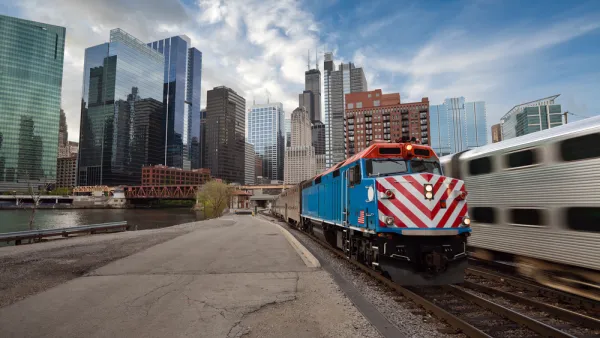The two trains were traveling on a single track in Bavaria, each going around a bend at about 62 mph so they were not visible to the engineers. The trains were equipped with automatic braking systems reported to have been deactivated.
"Media reports said human error was to blame for the high-speed crash near the southern spa town of Bad Aibling, where one of the trains sliced into the other, ripping a hole in its side," writes Ralf Isermann for Agence France‑Presse (AFP). They crashed at 7 am on Feb. 9.
One media source "said a signalling station worker had manually disactivated [sic] the automatic signalling system to let the first train -- which was running late -- go past." Another source "said manually disabling the signalling would have disactivated the automatic braking systems."
After German rail was liberalised at the end of the 1990s, BOB became one of the train operators competing with state-run Deutsche Bahn.
Although it has lost its monopoly operating status, Deutsche Bahn still owns the rail network.
More will be known about the cause, whether human error or a technical malfunction is to blame, after the trains' black boxes have been analyzed. Two of the three have been recovered. Both engineers and two conductors were among the fatalities.
Police chief for the Upper Bavaria region, Robert Kopp, said the trains were carrying about 150 passengers, fewer than on a regular work day as many people were off for the region's winter holidays.
The crash "rais(es) new questions about the safety and reliability of a rail network in Europe that has been the envy of much of the world," writes Melissa Eddy for The New York Times. But "crashes across Europe in recent years have highlighted weaknesses in the rail network."
Many countries in the region have abandoned government-run monopolies in favor of privately-run rail systems, even as the European Union is spending billions of euros to modernize rail networks.
The result is an increasingly precarious system, with a patchwork of old and new technologies in use at the same time, and with drivers, who are often alone in cars, shouldering more responsibility for safety.
In Germany, the most serious accident since unification was in 1998, when 101 people died in the northern town of Eschede after a high-speed train derailed, crashing into a bridge. Fatal crashes since then have been rare and on a much smaller scale.
"The accident is believed to be Germany's first fatal train crash since April 2012, when three people were killed and 13 injured in a collision between two regional trains in the western city of Offenbach," writes AFP's Ralf.
In the United States, the National Transportation Safety Board (NTSB) is still investigating the cause of the May 10, 2015 Amtrak Northeast Regional train derailment in Philadelphia that killed eight passengers.
FULL STORY: Ten dead as commuter trains collide in Germany

Analysis: Cybertruck Fatality Rate Far Exceeds That of Ford Pinto
The Tesla Cybertruck was recalled seven times last year.

National Parks Layoffs Will Cause Communities to Lose Billions
Thousands of essential park workers were laid off this week, just before the busy spring break season.

Retro-silient?: America’s First “Eco-burb,” The Woodlands Turns 50
A master-planned community north of Houston offers lessons on green infrastructure and resilient design, but falls short of its founder’s lofty affordability and walkability goals.

Test News Post 1
This is a summary

Analysis: Cybertruck Fatality Rate Far Exceeds That of Ford Pinto
The Tesla Cybertruck was recalled seven times last year.

Test News Headline 46
Test for the image on the front page.
Urban Design for Planners 1: Software Tools
This six-course series explores essential urban design concepts using open source software and equips planners with the tools they need to participate fully in the urban design process.
Planning for Universal Design
Learn the tools for implementing Universal Design in planning regulations.
EMC Planning Group, Inc.
Planetizen
Planetizen
Mpact (formerly Rail~Volution)
Great Falls Development Authority, Inc.
HUDs Office of Policy Development and Research
NYU Wagner Graduate School of Public Service


























